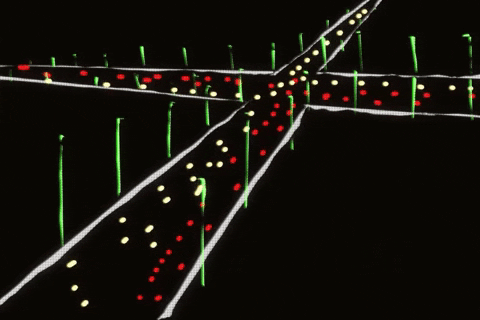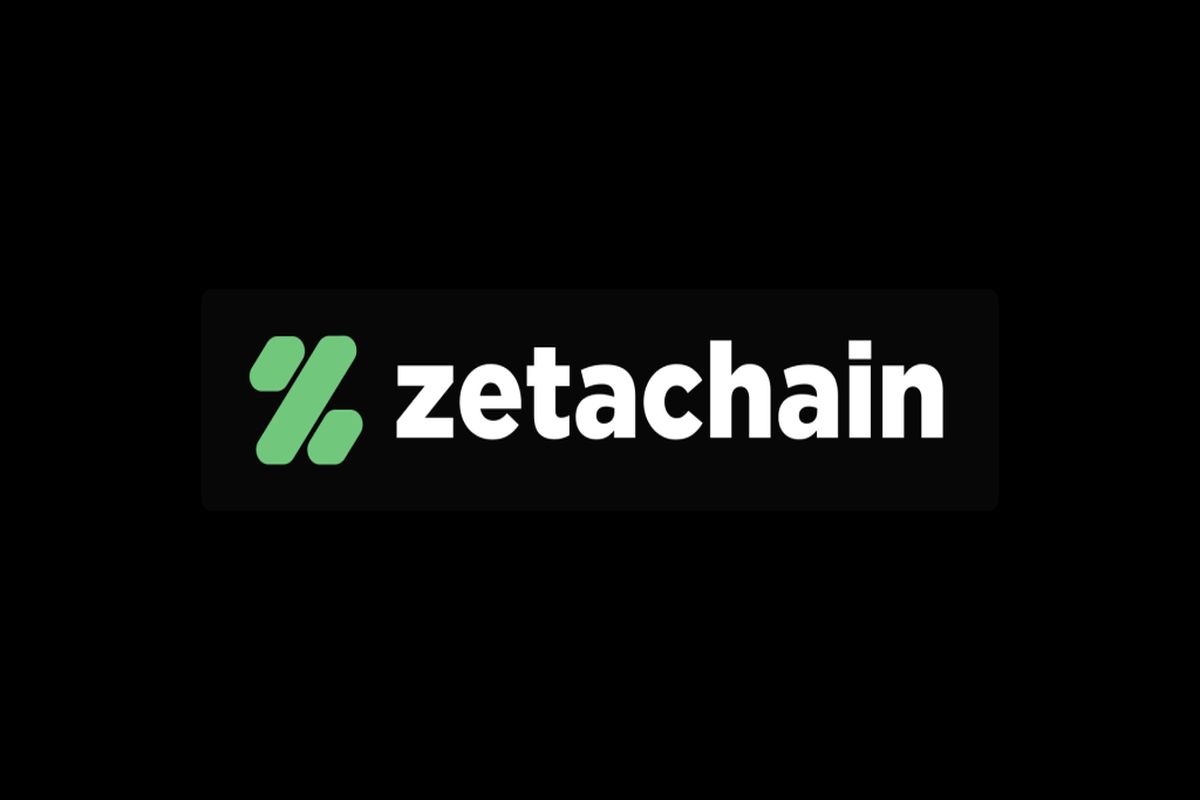Zetachain can be easily described by imagining a blockchain as a data highway. In this analogy, ZetaChain is the real highway, and the many lanes hosted on the highway can be said to be the peak functioning interoperability of different network chains.
By description, Zetachain is a single highway that features a predefined Set number of lanes. However, it offers one lane for data exchange for each application and its corresponding blockchain. In this case, a blockchain is a data network with no speed limits or traffic congestions, and at all points of data transfer, the singular lane in question always belongs to one driver.

It works like a race track where one user is the sole supercar burning its wheels. With the ever-changing and growing demand for the cryptocurrency sector, it has been very important for blockchains to have the capacity to scale and offer a higher uptime.
However, all this demand comes at an extra cost. The cost is that blockchains can get overloaded at times with a huge amount of transactions, which eventually results in a general slowdown.
The type of scalability that ZetaChain strives to provide to users across the board makes it a perfect choice to handle huge volumes of transactions without having to overload during super high demand.

One notable challenge for decentralized application development is that individual blockchains are not interoperable. If you want to develop an application that spans blockchains or leverages features and components available on another blockchain, the most popular solution has been to wrap tokens and leverage a bridge-like wormhole that passes the value of the tokens between the two different blockchains.
Subject to the relative market capitalization of the involved blockchains and the total number of wrapped tokens involved in the process, the bridges have developed vulnerable attack points for the bad actors seeking to exploit security shortcomings.
In a recently published whitepaper, ZetaChain wants to use a different strategy to resolve the challenges of blockchain interoperability; through the development of a public L1 (layer one) blockchain that is mainly designed to agnostically integrate blockchains. It does that to facilitate interoperability, coupled with a generic smart contract for the L1 blockchain that can hold and manipulate various assets on external blockchains.
Related: ‘One Network, Many Chains’ – The Case for Blockchain Interoperability
How Does ZetaChain Achieve It All?
Unlike all the other blockchain projects, ZetaChain has achieved its Omni-chain working mechanism by building entirely on the Cosmos SDK. Very few people might be aware that Cosmos is a Layer-0 blockchain. Layer-o blockchains exist and they support the creation of new blockchains on top of them.
Cosmos, unlike the other types of blockchains, does not make its network a priority. Instead, it helps in accelerating the operation of an ecosystem of networks that can share a lot of data between themselves without a single centralized party driving the entire event.
When it comes to the matters of engaging many blockchains, a common strategy for dApp development is to create an app for every chain. This can become quite impractical to maintain, especially since the number of heavily used blockchains continues to increase.
ZetaChain wants app developers to create one ‘omnichain’ app that interfaces with all the other blockchains through ZetaChain. Here is an example of what it might look like:
In a recent interview where ZetaChain contributors requested to maintain anonymity, a leading contributor said:
“With this new paradigm, there might be a world where you deploy a smart contract on ZetaChain and then it works across all chains, so an app developer doesn’t have to deploy a dApp on Ethereum, Polygon, and Solana. You can leverage liquidity on all the connected chains — we act as a metalayer.”
The primary idea is that instead of having to deploy a dApp and accompanying smart contracts on every chain, you add some extra functions to the existing smart contract and ZetaChain unlocks the functionality that they call an omnichain-dApp (odApp).
How Is It Different From Cosmos?
Looking at the ZetaChain whitepaper, it seems like it has many similarities with what Cosmos is proposing with its fundamental proposition of interconnected blockchains. Cosmos supports shared security via interconnected blockchains.
In that context, a lead contributor at ZetaChain stated:
“If you want to be part of the Cosmos ecosystem, you have to speak IBC,” which is its inter-blockchain communication protocol. ZetaChain can support any smart contract blockchain. We also enable support for non-smart contract chains like Bitcoin, Dogecoin, [and] Litecoin using Threshold Signature Scheme (TSS).”
In general, ZetaChain strives to become a protocol-agnostic layer for interacting with any blockchain, while Cosmos has a particular protocol for engaging with compatible blockchains. The ability to control assets on Bitcoin appears attractive for financial services, where there is a smart contract on one blockchain controlling some amount of Bitcoin.
Related: What Are the Best Smart-Contract Capable Blockchains?-Roundtable Interview
The Current State Of ZetaChain
Users can search for lots of information on any transaction using only the TX Hash. Since ZetaChain is a public blockchain and everything that happens on the platform is public, users can readily see what type of transaction was executed (Receive or Send) and between whom (the sender and the receiver), and across which chain (Ethereum, Polygon, or any other).
The great part about ZetaChain is its structural infrastructure of how the transaction fees are determined. Although ZetaChain strives to support the transfer of assets across various blockchains, its gas fee has been a major challenge while interacting with various protocols. It becomes a major hassle for users interacting with many smart contracts simultaneously.
ZetaChain allows users to pay for all the fees integrated within one transaction. Hence, instead of a user having to pay the smart contract mainnet fee and later interacting with the smart contract to also pay the gas fee, ZetaChain makes the whole process simple by combining all the fees.
Another offering that you should note with ZetaChain in asset handling. In most cases, multiple protocols that strive to be cross-chain or interoperable, need the user to change their main asset into a Wrapped version. For instance, wETH (Wrapped Ethereum), although these wrapped assets bring in a massive problem of contract exploits and it can be seen that the depeg of stETH from the main Ethereum. ZetaChain resolves that too.
Security On The Blockchain
Hypothetically, ZetaChain resolves one of the main challenges that affect bridging. It ensures that no stored value is tied up in wrapped currency which may be vulnerable to infinite minting scams, like the $300 million Wormhole attack that drew the attention of mainstream media like CNBC. When using the ZetaChain approach, no wrapped currency lays around waiting to be stolen.
They also appeared to have considered the risk of 51% attacks and have a smart contract set in place controlling ZetaChain supply. What is yet to be clear is how ZetaChain plans to build trust in its model of operating as an intermediary.
In this method, you have to trust the blockchain that you designed and developed your dApp on, the blockchain that you want to connect to, and ZetaChain as the bridge/layer in the middle that is facilitating the entire process.
The ZetaChain team remains anonymous but they are scrupulous. The project has received significant funding from major operators behind Binance and Coinbase. Nonetheless, there needs to be a paradigm shift as the world moves towards Web3. Many investors want to know who is behind the technology that they spend their IT budgets on.
Related: Blockchain Security and Innovation According to the Telos Blockchain Team
In this context, the ZetaChain team has many years of experience building a cryptocurrency and non-crypto products. Together, the team has introduced many papers in high-performance and distribution computing, led product and engineering at Coinbase and other companies, developed some of the most popular cryptos, exited many startups, and set up systems seen and used by multitudes of users.
The Takeaway
Today, ZetaChain is live on the Athens (testnet) Devnet, and soon it will announce the launch of its ZetaChain Mainnet. Developers can now deploy their dApps on the Athens Testnet. At the time of publication, there are at least 10 dApps live on the ZetaChain testnet network.
In general, ZetaChain is the only blockchain offering wholly interoperable smart contracts. Moreover, ZetaChain also supports interoperability for non-smart-contract chains like Doge and Bitcoin.
While bridging seems to be the main solution currently and the focus of most emerging projects, ZetaChain explores a highly ambitious and general approach: some native cross-chain smart contracts that primarily interact with almost all external blockchains.
There is no wrapping around assets needed to transfer values cross-chain, and there are no bridges required for each pair of blockchains. The ZetaChain manages assets based on predetermined arbitrary logic. Each external chain interaction is settled on external chains directly.
Hence, ZetaChain offers the most general platform for decentralized cross-chain applications to design their projects with links to nearly all existing or future blockchains and L2/rollup, with access to the entire supply of native assets on these chains.










